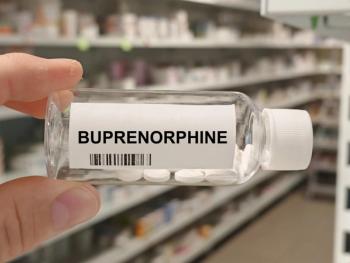
Op-Ed: Pharmacists Must Advocate for Prescribing Laws That Actually Work
Key Takeaways
- States allowing pharmacists as full PrEP providers saw significant increases in usage, unlike those with duration limits.
- Legal reforms must empower pharmacists to practice fully to improve patient access to care.
Beginning in 2019, some US states began allowing pharmacists to initiate the use of pre-exposure prophylaxis (PrEP) for HIV. The idea was that allowing more providers to provide immediate access to medication would increase use of that medication, and because increased use of PrEP was a key part of many states’ HIV strategies, the logic seemed straightforward.
But early reviews of this policy proposal yielded mixed results. For instance, one researcher found that these policies had no effect on increased PrEP use, whereas others found it did increase usage, but the effect took years to become significant.1,2 One potential reason for the muted findings is the difference in how states implemented their policies. Some states allowed pharmacists to act as full-fledged providers of PrEP, while others treated pharmacists as a regrettable stopgap measure and limited the number of months a patient could receive PrEP from a pharmacist without obtaining a prescription from some other provider, such as a physician. Our recent paper shows that it is the presence or absence of these duration limits that determines whether these policies are effective.3 States that allow pharmacists to act as full-fledged providers saw an immediate and dramatic increase in PrEP use. States that had duration limits (typically 60 days) saw no change in PrEP use.3 Since patients with private insurance typically use PrEP for over a year,4 these 60-day limits are quite extreme.
Legal reforms that allow pharmacists to fully practice in accordance with their expertise and training do not automatically yield improved patient access to care when these laws only grudgingly treat pharmacists as health care providers. Pharmacists, both in their individual capacities and through their organizations, need to be careful when fighting to help patients that the specifics of state-level or federal regulations do not undermine their ability to care for patients.
Of course, in crisis situations, no one doubts that pharmacists can serve patients in a wide variety of contexts. During the COVID-19 pandemic, pharmacists and pharmacies became a central source for COVID-19 diagnoses, advice on symptom management, and later the provision of vaccines. But even then, there were those who sought to undermine patient access to care and the ability of pharmacists to provide care, e.g., federal rules that theoretically allowed pharmacists to provide nirmatrelvir/ritonavir (Paxlovid; Pfizer) but whose compliance requirements were so onerous that many pharmacists did not.
States such as New Mexico have long demonstrated that allowing pharmacists an expanded scope of practice, such as the ability to prescribe medications, safely expands patient access to care.5 But despite long-standing success stories, pharmacists have been relatively passive in advocating for patients and themselves. Perhaps that’s because many pharmacists are not interested in fulfilling those roles. Pharmacists chose not to pursue becoming a nurse practitioner, physician, or physician’s assistant, and individually many pharmacists are uninterested in changing their role, as is their right.
But collectively, pharmacists have a responsibility to patients and the public to advocate for access to care. Pharmacists should demand that state policymakers review and rescind harmful limits on the ability of pharmacists to practice. For instance, states that currently have duration limits on pharmacist-initiated PrEP should abolish them. Pharmacists should also work to fight for broad access to test-and-treat protocols at community pharmacies and to allow pharmacists to fully practice within the scope of their training and expertise, as is done in states such as New Mexico.
Pharmacists and pharmacy organizations love to boast about how pharmacists are the most trusted and most accessible health care providers in the country. The question is whether pharmacists are willing to leverage those assets to fight to provide accessible care to as many patients who need it in as many communities as possible.
REFERENCES
Boyd C. Preventing HIV with pharmacist-prescribed PrEP. R Street Shorts. 2024;136:1-8. Accessed July 23, 2025.
https://www.rstreet.org/wp-content/uploads/2024/05/FINAL-RStreet-Short-136-1.pdf Wells A. Greater pharmacist prescribing authority improves patient access: a case study on PrEP for HIV. GoodRx. November 2, 2022. Accessed July 23, 2025.
https://www.goodrx.com/healthcare-access/research/pharmacist-prescriber-authority-hiv-prep Le T, Kelly T. State policies on pharmacist-initiated PrEP and PREP usage. J Am Pharm Assoc. 2025;65(5):102415. doi:10.1016/j.japh.2025.102415
Huang YLA, Tao G, Smith DK, Hoover KW. Persistence with human immunodeficiency virus pre-exposure prophylaxis in the United States, 2012-2017. Clin Infect Dis. 2021;72(3):379-385. doi:10.1093/cid.ciaa037
Hammond RW, Dole EJ. The pharmacist clinician: prescriptive authority in New Mexico. J Manag Care Pharm. 1996;2(5). doi:10.18553/jmcp.1996.2.5.594
Newsletter
Stay informed on drug updates, treatment guidelines, and pharmacy practice trends—subscribe to Pharmacy Times for weekly clinical insights.


















































































































































































































